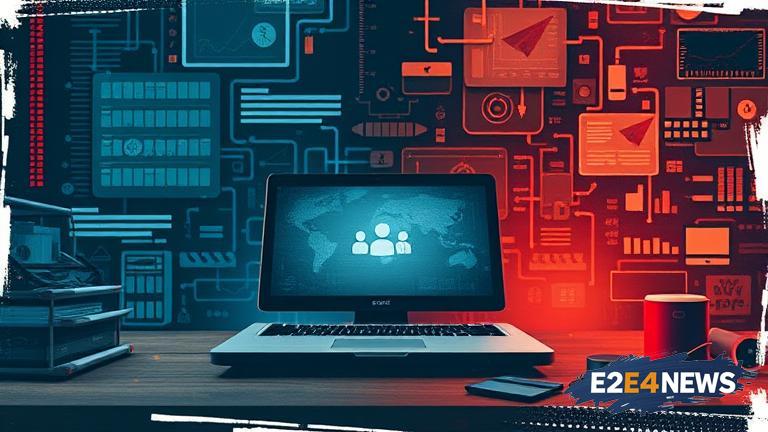The advent of technology has transformed the landscape of criminal proceedings, with electronic evidence playing an increasingly crucial role in the investigation and prosecution of crimes. In today’s digital age, electronic evidence can take many forms, including emails, text messages, social media posts, and computer logs. This type of evidence can provide valuable insights into the actions and intentions of individuals, helping to build a more comprehensive picture of a crime. The use of electronic evidence in criminal proceedings has been on the rise in recent years, with many countries recognizing its potential to aid in the pursuit of justice. In India, for example, the Supreme Court has acknowledged the importance of electronic evidence in criminal trials, emphasizing the need for its proper collection, preservation, and analysis. The Indian Evidence Act, 1872, has also been amended to include provisions related to electronic evidence, providing a framework for its admissibility in court. The collection of electronic evidence requires specialized skills and equipment, and law enforcement agencies are increasingly investing in digital forensics to enhance their capabilities. Digital forensics involves the use of scientific techniques to recover, analyze, and present electronic evidence in a court of law. This can include the analysis of computer hard drives, mobile devices, and other digital storage media. The analysis of electronic evidence can reveal a wealth of information, including IP addresses, email headers, and social media activity. This information can be used to track the movements and actions of individuals, helping to build a timeline of events surrounding a crime. Electronic evidence can also be used to identify patterns and connections that may not be immediately apparent, providing valuable leads for investigators. However, the use of electronic evidence in criminal proceedings is not without its challenges. One of the main concerns is the potential for electronic evidence to be tampered with or altered, which can compromise its integrity and admissibility in court. To address this issue, it is essential to ensure that electronic evidence is properly collected, preserved, and analyzed, using techniques that minimize the risk of contamination or alteration. Another challenge is the sheer volume of electronic evidence that can be generated in a single case, which can make it difficult to sift through and identify relevant information. To overcome this challenge, law enforcement agencies are using advanced technologies, such as artificial intelligence and machine learning, to help analyze and prioritize electronic evidence. Despite these challenges, the use of electronic evidence in criminal proceedings has the potential to revolutionize the way crimes are investigated and prosecuted. By providing a wealth of digital information, electronic evidence can help to build stronger cases and bring perpetrators to justice. As technology continues to evolve, it is likely that electronic evidence will play an increasingly important role in criminal proceedings, helping to ensure that justice is served. The use of electronic evidence in criminal proceedings is a global phenomenon, with countries around the world recognizing its potential to aid in the pursuit of justice. In the United States, for example, the Federal Rules of Evidence have been amended to include provisions related to electronic evidence, providing a framework for its admissibility in court. Similarly, in the United Kingdom, the Police and Criminal Evidence Act, 1984, has been amended to include provisions related to electronic evidence, providing a framework for its collection, preservation, and analysis. The use of electronic evidence in criminal proceedings is not limited to any one country or region, but is a global trend that is likely to continue in the future. As technology continues to evolve, it is essential that law enforcement agencies and courts are equipped to handle the challenges and opportunities presented by electronic evidence. This includes investing in digital forensics and other technologies, as well as providing training and resources to help investigators and prosecutors effectively collect, preserve, and analyze electronic evidence. By working together, we can ensure that electronic evidence is used to its full potential, helping to build a safer and more just society for all. The role of electronic evidence in modern criminal proceedings is a complex and multifaceted issue, requiring careful consideration of its potential benefits and challenges. As we move forward in this digital age, it is essential that we prioritize the development of strategies and technologies that can help to effectively collect, preserve, and analyze electronic evidence, while also ensuring that its use is subject to rigorous standards and safeguards. By doing so, we can help to ensure that justice is served, and that the use of electronic evidence in criminal proceedings is a positive force for good. The use of electronic evidence in criminal proceedings is a rapidly evolving field, with new technologies and techniques emerging all the time. As such, it is essential that law enforcement agencies, courts, and other stakeholders stay up to date with the latest developments, and are equipped to handle the challenges and opportunities presented by electronic evidence. This includes investing in ongoing training and education, as well as staying informed about the latest advances in digital forensics and other technologies. By working together, we can help to ensure that the use of electronic evidence in criminal proceedings is a success, and that justice is served. The future of electronic evidence in criminal proceedings is exciting and full of possibilities, with the potential to revolutionize the way crimes are investigated and prosecuted. As technology continues to evolve, it is likely that electronic evidence will play an increasingly important role in criminal proceedings, helping to build stronger cases and bring perpetrators to justice. With its potential to provide a wealth of digital information, electronic evidence is an essential tool in the pursuit of justice, and its use is likely to continue to grow and evolve in the years to come.
